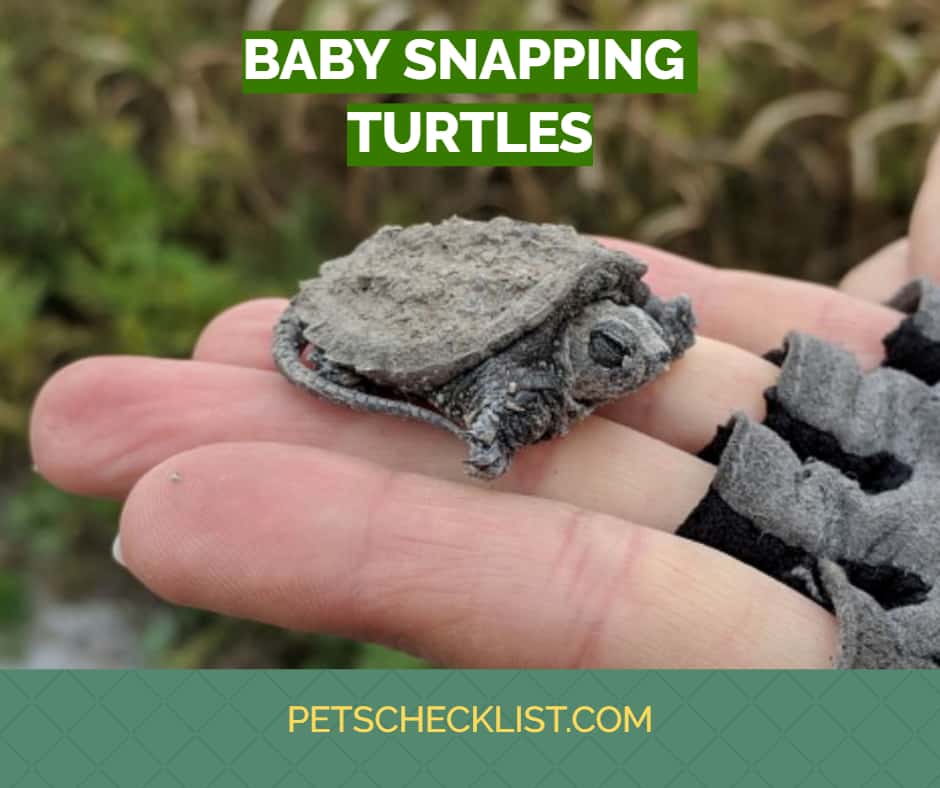Most people’s first impression of a snapping turtle is that it is a cranky, aggressive, and dangerous creature. Despite being perceived as a dinosaur throwback, this reptile is loved by many people who prefer exotic pets. When you want to own this creature as a pet, you might want to consider adopting a baby snapping turtle.
Table of Contents
What is a baby snapping turtle?
A baby snapping turtle is a species of freshwater turtles in its early life stage. It belongs to the Chelydridae family or the family of snapping turtles.
They came from the swamps and rivers of Central North and South America. These snapping turtles are known as the most popular variety among other species due to their appearance.
One common snapping turtle is the Chelydra serpentina. It comes from the word serpent. Just like snakes, they are aggressive and vicious too.
Before you handle these baby snapping turtles, you need to know how to get them. When you hold them incorrectly, they can bite you by turning their head all the way around, just like when you get bit by a snake. They are called snappy, and the reason is pretty evident when you encounter them.
These baby snapping turtles can live for a long time. And when we say a long time, we mean it. Their life span is comparable to humans. Yes, that’s how long they can live. Baby snapping turtles can spend their lives up to 40 years. It depends on the overall care.
The appearance of a Baby Snapping Turtle
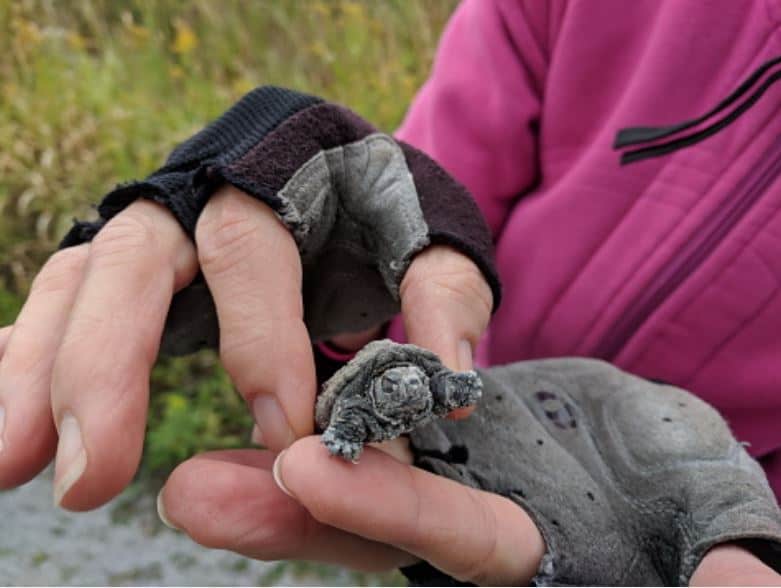
The baby snapping turtle is adorable with its cute size. They are irresistible and can catch your attention effortlessly. This turtle is commonly confused as an alligator snapping turtle. A baby snapping turtle has a narrow and cross-shaped belly shell with three short ridges running lengthwise. These turtles can weigh between 10-35 pounds.
These snapping turtles have a medium-sized head with small black eyes. They have a sharp and powerful beak that could harm you instantly. They use their hard beak to tear their food. The shell and body parts are naturally dark brown or slightly yellowish. You can often see mixed brown and green stains in the belly part. They also have a long tail covered with bony plates.
Are snapping turtles dangerous?
Baby snapping turtles are not dangerous to keep except when they feel like they are provoked or threatened. In the wild, this turtle’s aggression is one of the reasons why other creatures avoid them.
Snapping turtles are only capable of defending themselves from other animals. Their best defense is their strong beak-life jaws that can move very fast.
A baby snapping turtle would barely pose a threat to humans. But still, you need to be very careful when you are around them and handle them properly. If not, then you might regret your careless action.
Can you swim with a baby snapping turtle?
Swimming with this cute little turtle is not an ideal bonding activity to do, as they can chase you around the area. They are like moody turtles, one moment, they are peacefully roaming around and seem careless about the surroundings, and suddenly they will be mad for unknown reasons. So, be vigilant in observing their behavior.
Are snapping turtles good pets?
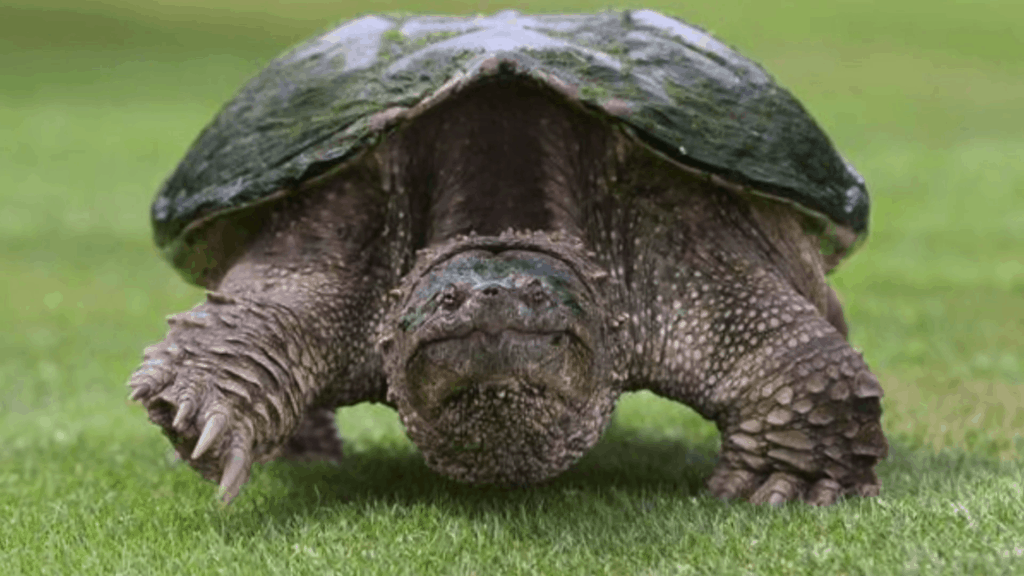
Generally, a snapping turtle is not an ideal and not the friendliest reptile pet for beginners. If not handled properly, they can use their very flexible necks to reach and bite your hand. Like any other turtles living in captivity, baby snapping turtles need a suitable habitat, proper care, a healthy diet, and attention. It might be challenging for newbies to handle these babies. Those experienced turtle keepers have the necessary skills and learnings from them will benefit you and your pet in the long run.
Snapping turtles are fun to watch, especially when they are still young. However, they can be easily stressed if handled inappropriately. You can have one if you are willing to dedicate time and effort to care for them. They can be a great companion to keep but with a few restrictions.
General Care
With proper knowledge, caring for a baby snapping turtle can be straightforward. It seems challenging at first because you need lots of time in providing a perfect ambiance habitat for them. You must also make sure that the turtle is happy where he is. Having a baby snapping turtle is a commitment that you should take full responsibility for.
Generally, you need a tank that serves as the baby turtle’s home. You can also provide sand and rocks as they need them whenever they feel like basking in a warm area. Since they are just babies, they are fragile. They will need a heat lamp if you are living in a cold place. These snapping turtles do not have body heat, and they love playing in a warm place to regulate their temperature. Fill the tank with non-chlorinated water and install a filtration system. You will need to have more advanced filters when they get big as they produce more dirt.
In feeding your snapping turtles, mealworms, guppies, and ghost shrimp are the comfort foods for these babies. They can eat home food too like bread, chicken, and beef.
Indeed, you should provide time, effort, and patience in taking care of them. It’s like you are taking good care of your child. They need special attention too.
Water Temperature and Environment
The snapping turtle needs a specific temperature range in captivity. These turtles cannot cope up well with different fast-changing levels of temperature. As the owner of this turtle, you have to ensure the quality of the water. It should be non-chlorinated and as shallow and deep as the length of your baby turtle’s shell. Too deep water is not advisable as these creatures are poor swimmers.
The water in the aquarium should maintain at 78-80°F for hatchlings and 75-78°F for adults using underwater heaters. You can also add PVC tubes to prevent burns.
Maintaining a specific water temperature in ambient air temperatures above the water should be kept 80-86°F by using an infrared bulb or heater. Always use a piece of temperature equipment to remain constant and ideal temperature.
An ideal environment for snapping turtles is a 50–60-gallon aquarium. However, when your turtle grows for like 8 inches long, you will be needing to upgrade to a 55-gallon container. The tank should have screened lid for adequate space. Create a small island for them by using rocks or sands. Whenever they are playing, they feel like they are in their natural habitat.
General Tank Requirements
If you have a baby snapping turtle, then you must prepare in advance. Make sure that you have a tank spacious enough to accommodate the turtle. A baby snapping turtle can live in a 10-gallon aquarium and a minimum of 120 gallons when they become adults. The water should be as deep as the turtle’s shell with the substrate at the bottom. Consistently put chlorine-free water in the tank. A sturdy wire placed at the top of the aquarium resists heating and lighting fixtures.
Baby snapping turtle has lighting requirements too. Install a high-quality UVB bulb to provide lighting cycles, stimulates Vitamin D, and prevent possible Metabolic Bone Disease. Replace the bulbs every 6-12 months.
For water temperatures, it should be kept at 78-80°F for young ones and 75-78°F for adults. You can control the temperature with the use of underwater heaters. It is also necessary to add PVC tubes around the heaters to avoid possible burns.
Generally, turtles can live without substrates. But since they are living in captivity, they need substrate to lessen their stress in their habitat. The substrate should be a combination of plants and driftwood, but you need to ensure that these driftwoods will not injure the baby turtles. Sanitize the decoration every 2-4 weeks, depending on your tank filtration system.
Sanitize the decorations every 2-4 weeks, depending on your tank filtration system.
Lastly, you must clean the tank every 2-4 weeks. Place the substrate and decors in a 10% bleach bath to prevent bacteria. Change the water for about 30% done every 1-2 weeks to maintain the water quality.
Average Lifespan of Snapping Turtles
Snapping turtles are most vulnerable when they are young. They require special attention, time, and effort from their owner. Caring for these turtles is quite more challenging than other animals. They have this childish behavior whenever they go aggressive in things or from other creatures. The exciting part of raising snapping turtles is they are your witness in your milestones as they can live long.
In captivity, they can live up to 47 years. It depends on how you treat them. When they are feeling your warm concern and love, they can live for above 47 years. Some snapping turtles can live up to 100 years and beyond. It’s no secret that turtles can live long as they are happily content with their habitat with a balanced and nutritional diet. They are rare ones, so if you have a chance to adopt these snapping turtles, give your best to provide for their needs.
Food and Diet
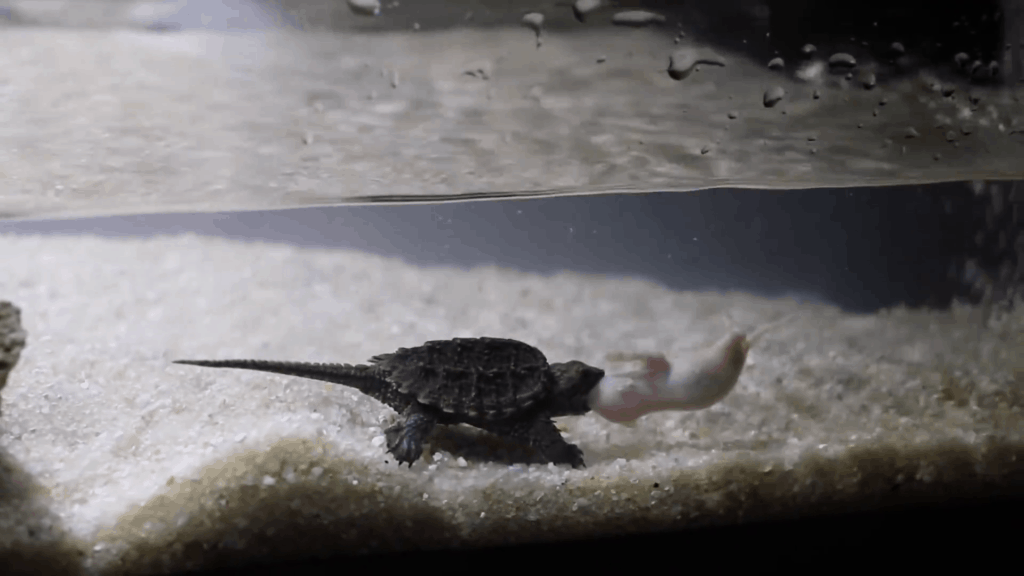
In the wild, they eat aquatic insects, small mammals, fish, reptiles, amphibians. Anything that fits their jaws, they would eat them. Snapping turtles should have a diet consisting of 75% protein and 30% plant matter. And, yes, they are omnivores. Fish, worms, pellets, and snails are their occasional foods.
All-Plant Diet for Baby Snapping Turtle
For an all-plant diet, feed them with the following:
- Water Lettuce
- Cactus without thorns
- Duckweed
- Hyacinth
- Vegetables
- Apples
- Grapes
- Blackberries
- Pears
- Bananas
- Cucumbers
- Strawberries
- Watermelon
Pellets are an alternative supplemental diet for snapping turtles. It contains nutrients needed by the turtles, especially young ones. But it is always advisable to feed them organic and fresh foods.
Typical Behavior
The baby snapping turtle looks can be deceiving. They may look like pure innocent because of their cute size. Typically, snapping turtles are aggressive predators. They are usually alone because they tend to quarrel if they have mates.
This turtle’s tank behavior is similar when they are under the water in their natural habitat. Snapping turtles are just relaxing and swimming around each corner on the land parts of the tank.
Do baby snapping turtles have tails?
A baby snapping turtles have a long brown or black colored tail. Those tails are rough in texture. Usually, we do not see a turtle with tails. They only have one noticeable thing that makes us think that they are turtles, and that is their shell. How old are you when you found out that there is a turtle with tails? Have you seen one?
Foods to Avoid
Snapping turtles has its restrictions on foods too. They should avoid dairy products like milk, yogurt, or cheese. They cannot digest dairy, and with that, it may cause health problems.
Avoid giving them raw meats randomly. This food can be rotten before the snapping turtle eats it. Never give manufactured food such as crackers or bread. They contain ingredients not suitable for a turtle’s diet.
Avocado peel, seeds and leaves, tomato leaves and vines, poison ivy, and leaves of rhubarb, potato, and tobacco plants are not appropriate for these turtles.
Do’s
Feed your snapping turtle twice daily if they are under six months old, while once every other day for turtles older than six months. They should only eat protein foods, vegetables, greens, fruits, flowers, and pellets.
Always check the maintenance of the tank. There may be sudden and unexpected changes that need immediate action before affecting the snapping turtle’s health.
Clean and change the water by around 30%. Check the dry land where you can find them most of the time relaxing. Give them an adequate amount of space to roam around.
Don’ts
In maintaining proper care for snapping turtles, there are certain practices that you should avoid. It is clear if it is not for them. Like in the tank requirements, you should not fail at filtration simply because these turtles are dirty. They are waste coming out too often at the same time.
Do not use a glass top on your snapping turtle’s tank. This turtle requires Ultraviolet A and B light to survive. You can use UV-B light that plays a vital role in producing Vitamin D3. The turtles need Vitamin D3 to absorb the metabolism of calcium.
Snapping turtles do not need loud companions. They are more likely to be alone than be surrounded by extroverted creatures. Whether turtle, tortoise, or terrapin, a pet with four legs and a shell can make for a fine companion.
Conclusion
After all the discussions, we must say that baby snapping turtles are exotic types, and they belong to the lovely people with rare preferences. These babies are quite fun yet challenging to look after. They are not picky when it comes to food and you have to provide them a filtration system. The challenging part is their behavior. So, better to start your research about the way they behave.
Appreciating their existence is complimenting nature. If snapping turtles ever cross your mind, then it might be the sign to have one.
If you love our content, we invite you to follow us on our social media outlets for more updates!
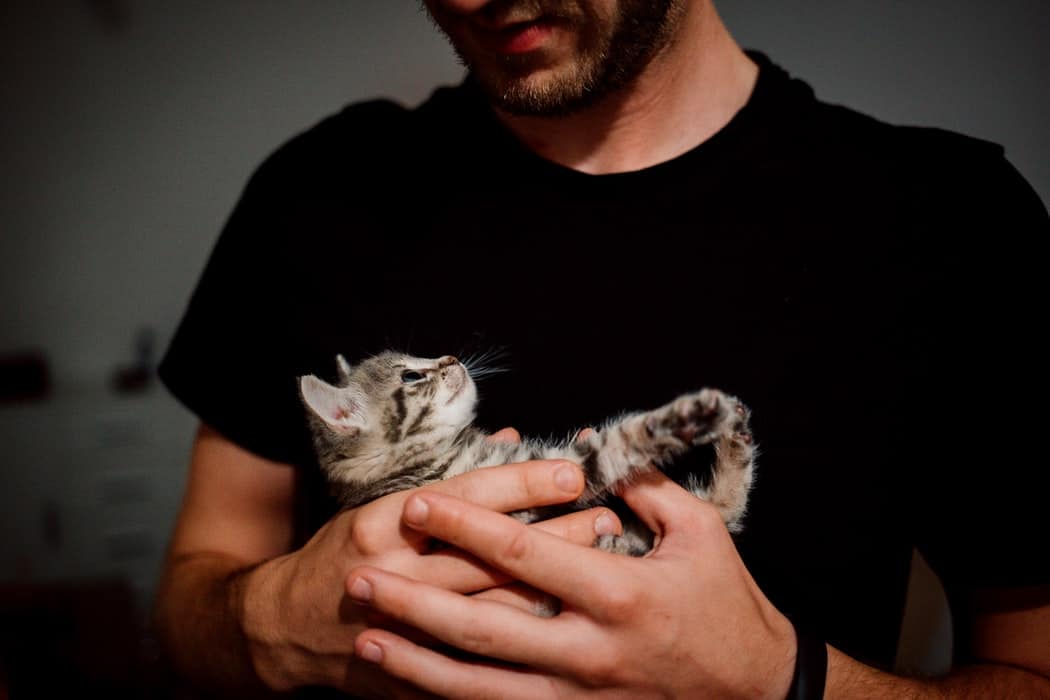
Hezekiah is a pet lover since birth, according to his parents. He started writing for the Pets Checklist in 2020. He is fond of playing with and taking pictures of different friendly animals around his neighborhood. He loves to read and write articles about pets, science, and music.

